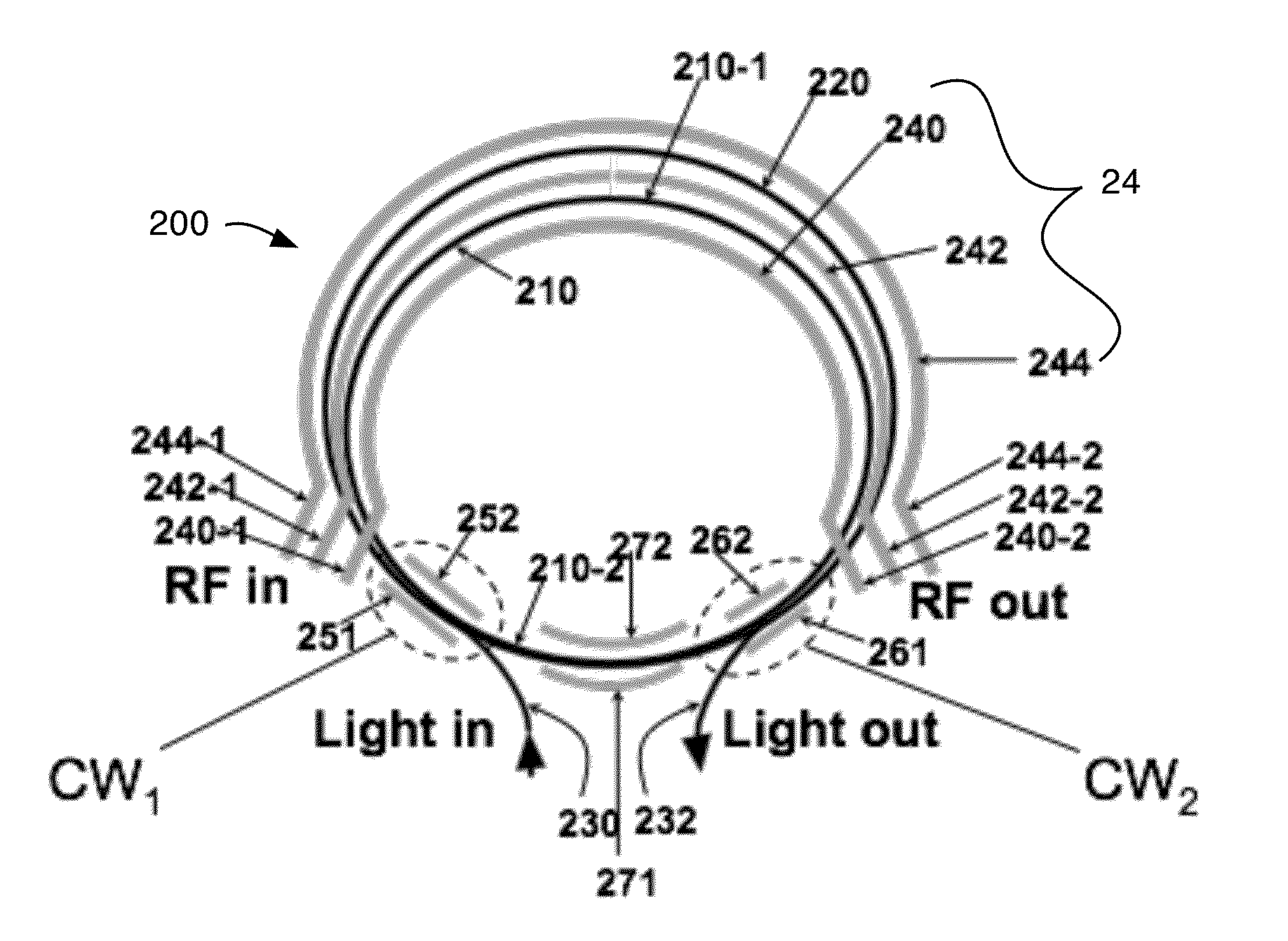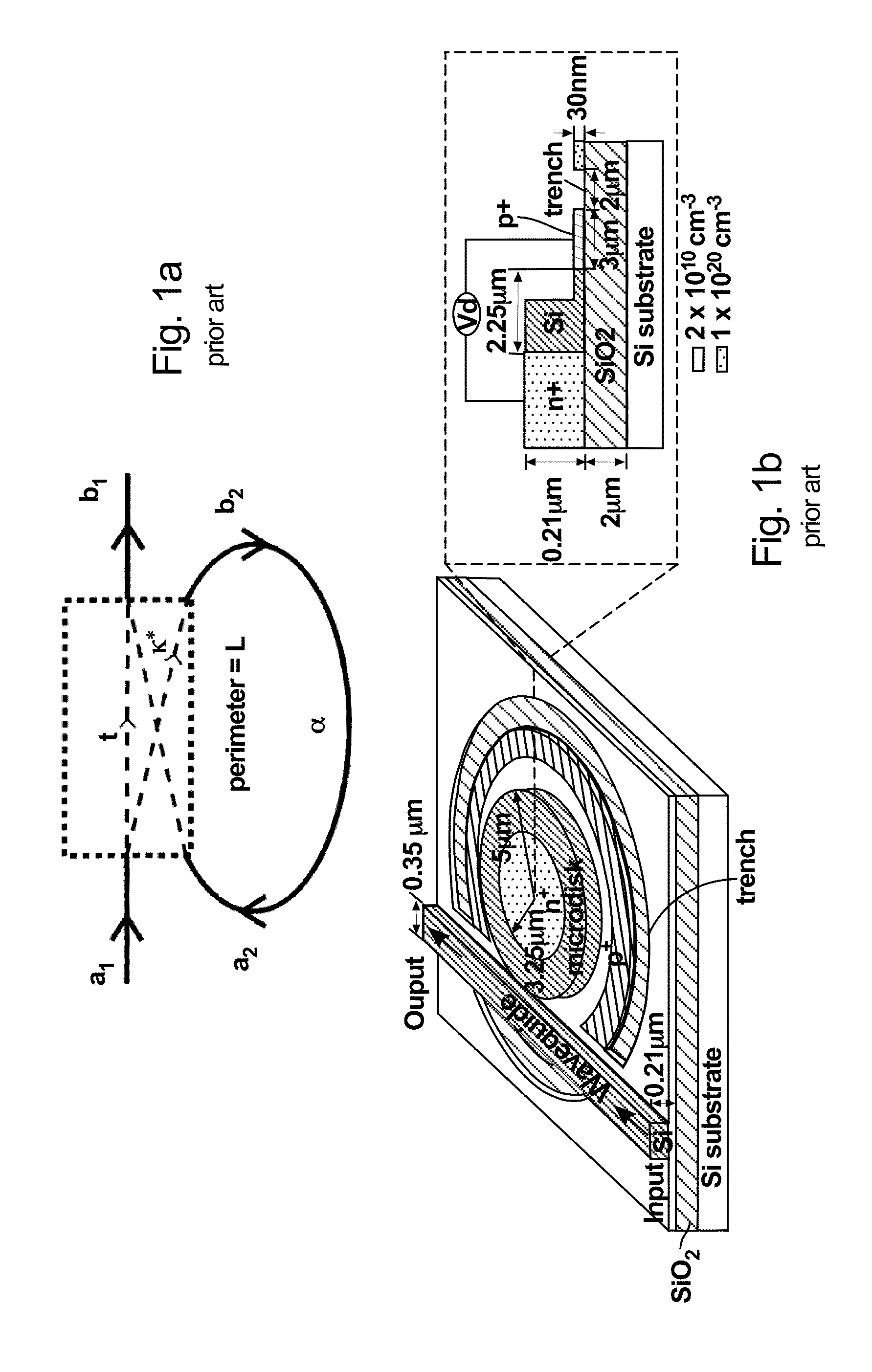Re-circulation enhanced electro-optic modulator
a modulator and electromagnetic technology, applied in non-linear optics, instruments, optics, etc., can solve the problem that the modulator can potentially have a large instantaneous modulation bandwidth, and achieve the effects of reducing the applied voltage, reducing the distortion of memory effects, and low loss
- Summary
- Abstract
- Description
- Claims
- Application Information
AI Technical Summary
Benefits of technology
Problems solved by technology
Method used
Image
Examples
Embodiment Construction
[0030]The presently disclosed electro-optic modulator is depicted schematically in FIGS. 5a-5d. In one embodiment, the disclosed electro-optic modulator 200 comprises a circular-ring optical waveguide 210, a circular optical waveguide segment 220 and two S-curved optical waveguide segments 230 and 232. See FIG. 5a. The circular-ring optical waveguide 210 forms a continuous ring which is circularly shaped in the preferred embodiment. It should be appreciated that waveguide 210 may be formed as a continuous ring configuration of any convenient shape, so it could be of an oval or oval-like configuration or an egg-shaped configuration, if desired. In the following discussion, waveguide 210 will be referred to as a circular-ring waveguide as that is the shape selected for the currently preferred embodiment thereof. Waveguide 210 forms a continuous loop, but for sake of discussion it will sometimes to useful to discuss portions of it. The upper portion of waveguide 210 in FIG. 5a is label...
PUM
| Property | Measurement | Unit |
|---|---|---|
| frequencies | aaaaa | aaaaa |
| frequencies | aaaaa | aaaaa |
| refractive index | aaaaa | aaaaa |
Abstract
Description
Claims
Application Information
 Login to View More
Login to View More - R&D
- Intellectual Property
- Life Sciences
- Materials
- Tech Scout
- Unparalleled Data Quality
- Higher Quality Content
- 60% Fewer Hallucinations
Browse by: Latest US Patents, China's latest patents, Technical Efficacy Thesaurus, Application Domain, Technology Topic, Popular Technical Reports.
© 2025 PatSnap. All rights reserved.Legal|Privacy policy|Modern Slavery Act Transparency Statement|Sitemap|About US| Contact US: help@patsnap.com



